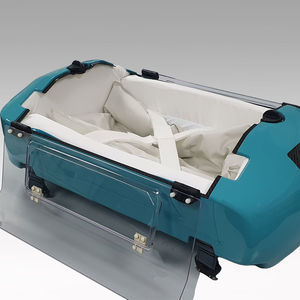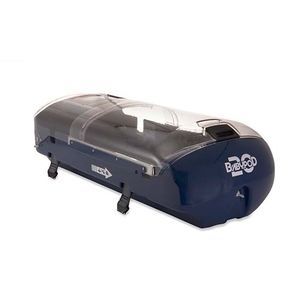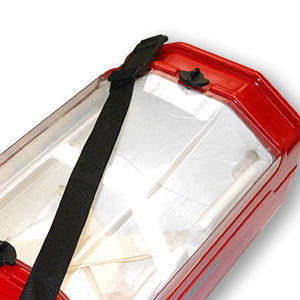
- Primary care
- Pediatrics
- Neonatal transport incubator
- Advanced Healthcare Technology
- Products
- Catalogs
- News & Trends
- Exhibitions
Neonatal transport incubator BabyPod 2







Add to favorites
Compare this product
Characteristics
- Configuration
- transport
- Weight
10.6 kg
(23.4 lb)- Length
1,026 mm
(40.4 in)- Width
470 mm
(18.5 in)- Height
280 mm
(11 in)
Description
Typically, in the event of a road traffic accident, a conventional transport incubator could break free from its mounting, endangering the lives of both the patient and of crew members. The weight of a typical incubator can be up to 120kg, and as such is incredibly difficult to secure to an ambulance safely. In the past, both injuries and deaths have been caused due to incubators breaking free during a crash.
The BabyPod 2’s carbon/composite fibre construction allows for a transport device with dramatically reduced weight from a typical solution. Weighing less than 10kg, it can be secured to any common transport stretcher, in any road ambulance, fixed-wing or rotary aircraft.
This flexibility reduces the need for a transport team to wait for the availability of a specific incubator or ambulance, reducing the time taken to transfer the patient. When times of the essence, this is important both for the well-being of the patient, and for the availability of the transport team to attend further transfers.
The BabyPod 2 is designed with the safety of the infant in mind
The hi-tech carbon-fibre construction of the BabyPod 2 has undergone crash testing to comply with 10g European Ambulance Standard (CEN 1789) requirements.
The BabyPod 2 has been tested with an acceleration/deceleration of 10g in all directions representing a crash at 55 kilometres per hour (30 mph) and is the only transport device world-wide be tested and approved to this standard.
Inside the BabyPod 2 unit,
the infant is comfortably secured in position by a vacuum mattress and soft infant positioning straps.
VIDEO
Catalogs
No catalogs are available for this product.
See all of Advanced Healthcare Technology‘s catalogsOther Advanced Healthcare Technology products
AHT PRODUCTS
Related Searches
*Prices are pre-tax. They exclude delivery charges and customs duties and do not include additional charges for installation or activation options. Prices are indicative only and may vary by country, with changes to the cost of raw materials and exchange rates.






